No question: Buying things that have been used can mean major savings.
But those upfront savings aren’t always worth it. Some used items can come with risks that may not be obvious—microscopic bugs, for example, or hidden damage that renders the item unsafe. In these instances, buying new is worth the extra money.
So how do you decide? We asked two experts in this area: Katie Berry, the blogger behind Housewife How-To’s, and shopping pro Trae Bodge.
Berry starts with two general guidelines: Can the item be thoroughly cleaned, and can you verify its history or make sure it’s safe? “You don’t want to buy someone else’s problems,” she says.
For those items that make sense to buy used, Bodge says that with apps, online sellers and social media–based swap groups, it’s easier than ever to find quality secondhand items. “Just always remember,” she says, “buyer beware.”
Here are their recommendations for what to buy used—and when you should pony up the cash for new.
BUY IT USED
Clothing
Clothes are usually great to buy used, says Bodge (except for hats and shoes…keep reading for those)—just be sure to wash or dry-clean them before wearing.
Kitchen Items
Look for things like glassware, flatware and storage containers at garage sales to help stock your kitchen on the cheap, says Berry. (The exception is nonstick cookware—see below.) As with clothing, wash your purchases thoroughly before using.
Refurbished Electronics
Berry is a big fan of buying refurbished electronics—but only from reputable resellers. The reseller will make sure the items work well and that computers are free of viruses. They’ll often even include a warranty with your purchase.
Home Improvement
Berry has had great luck finding home-renovation supplies secondhand. “People often buy too much for their projects and want to sell the leftovers,” she says, so things like tiles and tools can be great finds at garage sales. Looking for a project of your own? Check out these home improvements that only look expensive.
Fitness and Sporting Gear
Exercise equipment (bought with the best of intentions) can often be found only lightly used, says Bodge. She says this is a handy category for kids, too; sporting goods like ice skates might be used for only one winter before a child grows out of them.
Solid Wood Furniture
Hardwood furniture can be a great investment, Berry says, as it’s often sturdier than more contemporary styles. Give it a thorough cleaning, says Berry; then paint or stain it to match your decor, or just leave it as is.
Books
Books may get dog-eared, but they wear well, says Bodge. And students can find great deals on textbooks that they won’t need for more than a year or a semester.
Cars
Of course, used cars can be a great bargain—if you do your research. Go to a dealership if you want to take a test drive. (Read our tips on buying a used car online and choosing a great used car for the family.)
BUY IT NEW
Child Car Seats
It’s difficult to know if a car seat has been in a crash or has been recalled, says Gloria Del Castillo, of the Buckle Up for Life program in Cincinnati—so buy it new. And you don’t have to spend a fortune, since all car seats have to meet the same safety standards.
Kitchen Appliances
Be wary of used big-ticket appliances, says Berry. It’s hard to know how well they’ll work until you use them—and there’s no telling how long they’ll last.
Upholstered Furniture
Furniture made of sturdy materials may be a good deal, says Bodge, but avoid pieces covered in fabric. They could be hiding structural wear and tear—and worse, you might bring unwanted pests like bedbugs into your home.
Nonstick Cookware
There’s some debate over the safety of nonstick cookware that’s been chipped or scratched, says Bodge, but don’t take chances. Buy new items individually, or pick up a budget set.
Hats and Shoes
Many kinds of hats can’t be washed, says Berry, so there’s no easy way to eliminate the previous owner’s bacteria and body oils or ensure that you avoid lice. Shoes can also come with bacteria; plus, new shoes often mold quickly to the original owner’s feet, so they may not work for yours.
Cribs
Cribs made before 2010 mostly fail to meet the new crib safety standards from the Consumer Product Safety Commission, which took effect in 2011. Furthermore, any crib with an unknown history can come with safety concerns, including faulty construction or assembly. Avoid secondhand crib bedding and mattresses as well; used mattresses have been associated with an increased risk of sudden infant death syndrome (SIDS).
Helmets
Used motorcycle and bicycle helmets may have tiny cracks or an old inner lining that could compromise your safety in an accident. And the damage, says Berry, may not be obvious when you’re looking at the helmet.
Tires
Even if tires look like they’re in good shape, says Berry, they could have defects or punctures you won’t necessarily be able to see. Tires play such an important role in car safety that you don’t want to take chances with them. (We debunk common tire myths here.)
Keep the savings coming: Head to geico.com for a free insurance quote on auto, motorcycle, homeowners or renters insurance (and more!).
Read More: The Best Time To Buy: A Month-By-Month Guide To Scoring Big Bargains
By Nicole Price Fasig
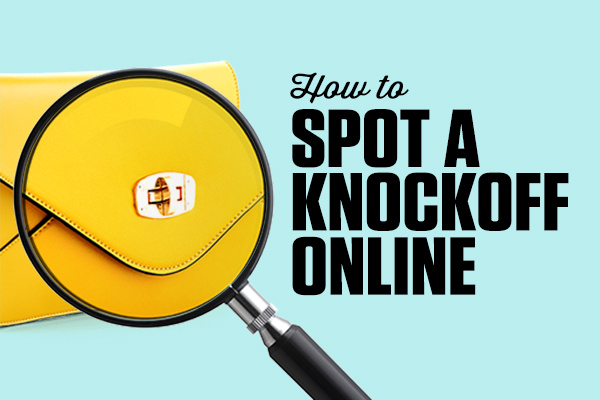 Designer sunglasses for $12. High-end jeans that cost $8. A piece of antique furniture at a temptingly low price.
Designer sunglasses for $12. High-end jeans that cost $8. A piece of antique furniture at a temptingly low price.
We all know how thrilling it can be to find a great deal online. But before you put the item in your shopping cart, take a moment and look closely—sometimes a deal is too good to be true.
Online shopping has made it easier than ever for vendors to sell counterfeit goods. Purchasing such items can leave you with an inferior product—and may even put your information at risk. But often these dubious listings come with clues indicating that you might be buying a fake.
“Five cues help me spot fakes online,” says Kevin Godfrey, owner of Henry Laurent Estate Sales. Having appraised and sold more than $100 million in luxury goods, Godfrey’s seen so many knockoffs that he’s developed a “sixth sense” about what’s real. And there’s no reason, he says, that consumers can’t hone this skill as well.
Here’s what he looks at:
The Price
An outrageously low price is the first indication that the product might not be genuine. If something is suspiciously cheap, trust your gut—and then do your research. Check around on other websites, particularly the manufacturer’s home page, where you may get a sense of what similar products retail for. “Especially with luxury items, if they’re significantly discounted, there’s a good chance they’re fake,” says Godfrey.
The Seller
Some of the best-known online marketplaces, says Godfrey, are “littered with fakes” offered by third-party sellers whose products aren’t held to the standards of the site itself. Don’t trust a seller until you’ve verified that they are who they claim to be. How do you know? One way is to look at the URL. Make sure it starts with “https://”—that’s a signal you’re on a secure server, and it should be accompanied by a picture of a padlock or key. Of course, you should also read reviews, and don’t buy anything unless you’re certain that other consumers have had good experiences.
The Photos
It’s an old cliché: The camera never lies. No matter how clever the counterfeiter, producing convincing photos is where they often trip up, says Godfrey. With new products, expect high-quality professional photos. For something used, however, Godfrey advises the shopper to look for the opposite: a photo of the actual product that’s going to be shipped to you, rather than a professional stock photo. Another warning sign: a photo where the item looks stretched or squeezed, which could mean the photo was taken off another site. If you really doubt what you’re seeing, do a reverse image search to see where else the image has been used online.
The Description
What does the site have to say about the product? If the description is garbled or riddled with typos, it can mean that the item isn’t for real. Be on the lookout for adjectives like “genuine,” “authentic” and “original,” which fake retailers love to throw around. “When you see that, I’d say there’s a 95 percent chance it’s a fake,” says Godfrey. “The real companies don’t need to tell the consumer that their goods are authentic.”
The Website
One of the sneakiest tactics in the counterfeiter’s arsenal involves not just fake goods, but a fake website as well. Social media is a particularly effective place to deploy this scam; posts can link to a website that looks genuine but is actually a front for a fake operation. “They copy a lot of the design elements from the official website,” says Godfrey, “so if you don’t look at the URL, you won’t realize that you’re not actually on the site you wanted to visit.”
Want a deal that isn’t too good to be true? Get affordable identity protection and jewelry insurance through the GEICO Insurance Agency.
Read More: Concerned about Internet fraud? Learn more about the Warning Signs of Identity Theft.

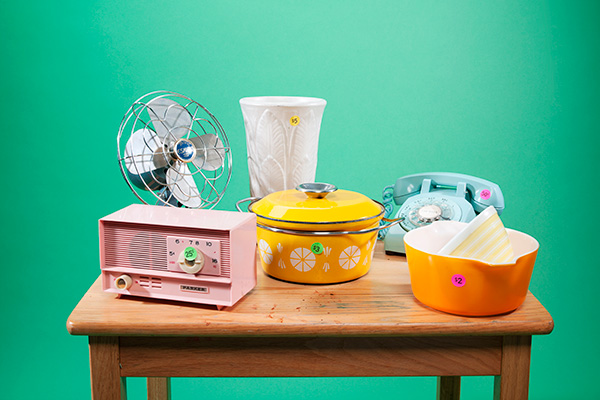



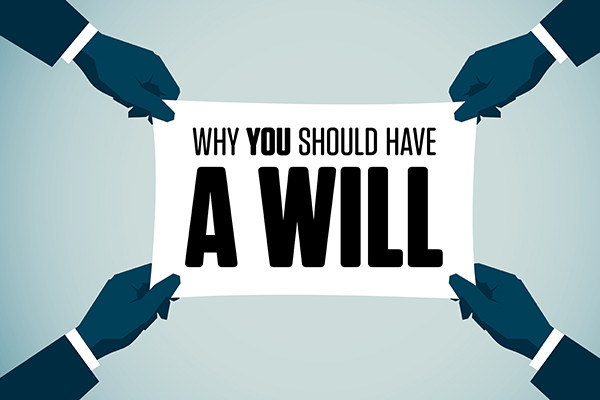
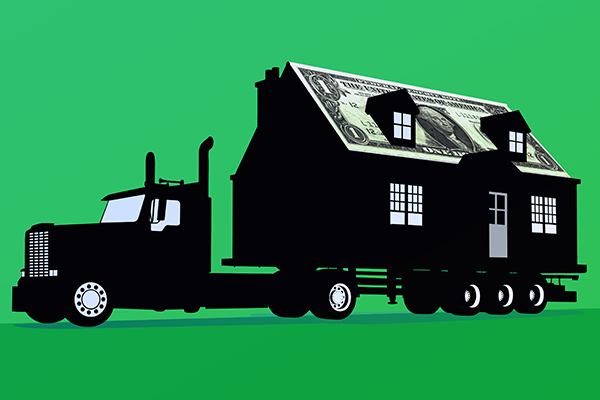

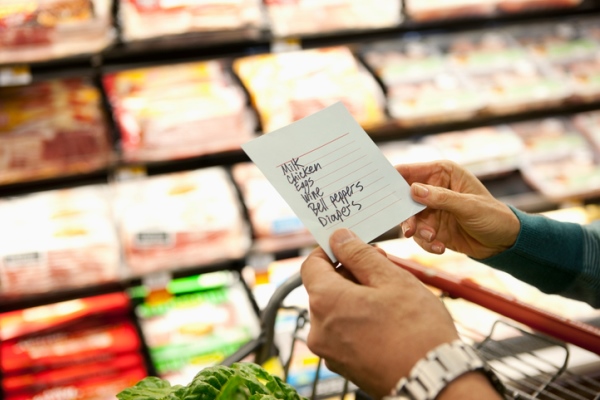

Laura says,
Thank you for all the Tips on how to save
Jane prescott says,
Eeeeeeewwwww!!!!!! They are so hard to get rid of. Luckily my new friend kills bugs for a living, mostly termites anything structural.
Jane prescott says,
I got a fake website once, luckily I caught it.
I buy lots of stuff second hand, there is great joy in knowing everyone elts paid more than me. Never buy used tires, your life depends on them. Never buy used bedding, unless it’s a hammock you can wash. Obviously some things you cannot buy used.
Joy says,
Be extremely careful with all forms of bedding. I knew a ministry that discovered bedbugs in their dorms, gave them a cursory washing in an ancient machine and then put them up for sale in their thrift store. Clothing and bedding must be washed immediately in hot water with soap and bleach if possible. Not everyone out there is conscientious. Beware!
susan dinkler says,
There’s always a chance your second-hand wooden furniture could have termites that
could cause lots of damage in your house, garage or shed.
Juan says,
I have always bought used shoes with no problems. If you are concerned about microbes, place the shoes in a plastic bag in the freezer for 24 hours.
Rhodesia says,
Good morning Thank-you for these great tips/ suggestions. Buyer beware. A few years ago I purchased some clothing from a thrift, bargain basement store. I later realized the clothes had bed bugs infestation, which got on my sofa. I am not suggesting anybody else do this . but I microwaved the three articles of clothing, and then washed them in hot water. I had to microwave, and wash my sofa covers to stop any further infestation. I never shopped at that store or any of its other stores, after this experience, and that store went out of business almost a year later. Sometimes all that glitters isn’t gold. A deal isn’t a deal if you and your loved ones are scratching all over their bodies.
Debbie says,
Thanks for the tips it’s greatly appreciated..keep them coming.
William T Williams says,
Very good advice. However, your advice on auto tires defies my direct and deep experience for the past 30 years. Please read on and learn……
Early in my life, i too was what I like to call now a “Retail Tire Buyer”. Firestone or Goodyear or other Mainline Retail location was always what I did. As well, i would end up even buying such useless stuff as Hwy warrantee lol….
I changed when one time it took me almost 4 hours to get my car back from the hustlers who had my auto of the floor and on the RACK…..You see they are trained to find “other” issues with your auto…Real and Perceived and because they “have you” and “Your Car” you end up paying way too much for such things as Brake Jobs, Shocks, etc.
K……so found a used tire shop around the corner……Started buying my tires there for about 75% less……..and was always back on the road in less than an hour. Typically a half hour……what a joy and have saved by conservative estimate more than $12,000 over the past 30 years.
have a great day my friend…
Juan says,
I have nearly always bought used tires. You can can buy a much better grade of tire hardly used for less than the cheap brands and end up getting way more mileage out of them.
Kent Wilcox says,
Second hand home improvement tools are a 50/50 , I bought a used hammer drill to drill 6 holes in concrete. Drilling worked great, hammer? Nope. $30?
Emily Hinckley says,
I appreciate that someone spent their time writing out this article and getting opinions from not one, but two people. But, I’ve got to admit when I caught a glimpse of it in my email from GEICO I was really thrown.
Buying things like hats and shoes are fine secondhand! You just need to be smart about your purchase. Same goes for furniture! By posting this you are perpetuating the idea that secondhand purchases are gross and dirty rather than thrifty, an awesome way to recycle and ultimately good for the planet. By encouraging people to buy these things new you are in turn saying “If you ever have any of these items you want to let go, just throw it away.” That’s ridiculous and there is no “away.” Recycling and consuming less is the best we’ve got.
I really think this is sending the wrong message about overconsumption and I’m having a hard time figuring out what exactly this has to do with GEICO at all. This listicle may have been better informed if you sought out advice from someone who encourages secondhand purchases always, like author Bea Johnson.
KS says,
Hope your relatives are reading this, so they don’t have to buy you NEW stuff. Gross..lice, bugs, rats and athletes foot. Ewww..
ask your Dr. if it’s safe.
Juan says,
Discarded clothing is the #2 problem clogging our landfills. Please stop propagating scares.
Liz says,
Generally speaking, you can treat for any of these things. If you purchase a hat secondhand, wash it first! If you’ve ever had lice, you know a run through the wash with the water on hot will kill the lice and nits. There are sprays and other treatments for athlete’s foot and most bugs. As for rats…. I don’t know where you’ve purchased furniture, but I can’t imagine a rat infestation being hidden in a sofa. I think the noise would signal an issue, but perhaps that’s just me. Inspecting your items before you purchase them would also help avoid most of these issues.
I’m sure any doctor who has spent more than five minutes in the real world would suggest any of these things would be safe if handled properly.
Also, to head off your ridiculously snide comment, I would much prefer something handmade or repurposed or secondhand over something new. It’s new to me and probably will have come with a lot more thought, so I certainly would hope that anyone kind enough to wish to gift something to me sees this!
Also, Emily? Thanks for the heads up on the author! I’ve been looking for more information on the subject, so I’m thrilled to stumble upon this!
SP says,
Yes agree it’s just being smart about what you are buying and what you want to sit on poison or bed bugs. There have been more outbreaks over the past ten years with those critters and people just don’t know .
Emily hinckley says,
Yes, my relatives know I prefer secondhand or homemade! You shouldn’t perpetuate this idea, especially if this has never happened to you following a secondhand purchase. So silly
Juan says,
Exactly, it’s pretty easy to tell if something is really dirty. Lots of shoes and hats sold used have only been worn a few times, some not at all.
Diane says,
I’ve also had good luck purchasing holiday decorations. I scored a brand new, unopened 4′ artificial Christmas tree for $10. It even came prewired with 150 clear mini lights! For $32, I for a shopping bag & a half of seasonal decorations.